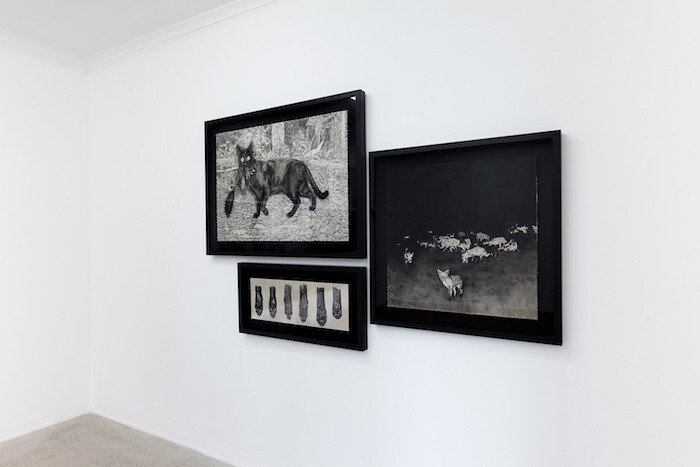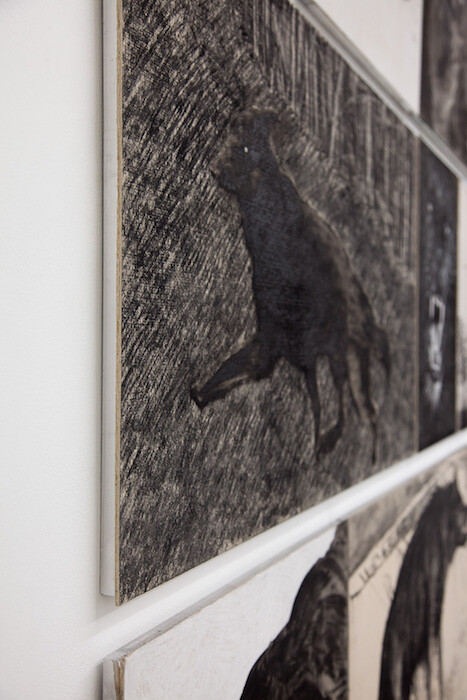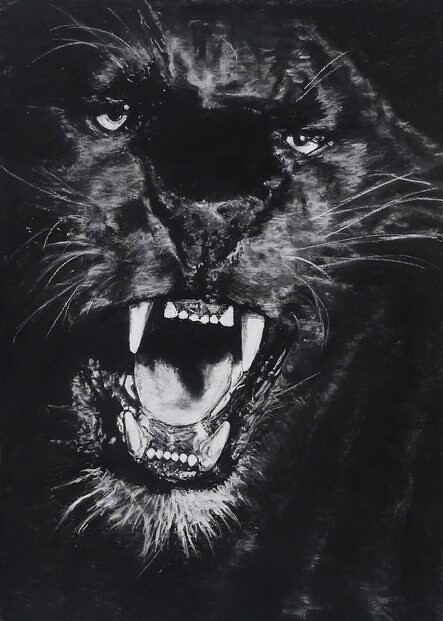There is no animal in this country that does that type of thing. It was the size of a giant tiger. It was about a meter long and had black, silky fur.
The belief in the existence of elusive, strange, fabulous, and extraterrestrial animals is ubiquitous and timeless. Predatory giant turtles, oversized snakes, and fantastic hybrids are abundant in both Ancient Greek and Egyptian mythology. And even today, in our technologically advanced modern society, mystical animals continue to be part of our imaginary and folklore. Among such popular figures are phantom cats or Alien Big Cats: large predatory felines that, although not native to the United States, Europe, and the Antipodes, reportedly roam in the wilderness of these regions. Some witnesses believe that these elusive felines are ghosts or evil creatures.1 Others suggest that they are escaped circus or zoo animals or exotic pets, or their descendants,2 while most consider them regular dogs, cats, and foxes, transformed by overly active imaginations.3 Books and articles are dedicated to the subject of these cats; amateur organizations have been founded to collect and catalogue evidence; and a pseudoscience, cryptozoology, studies their existence, as well as those of other fantastical entities, such as the chupacabra and the yeti.
Living on a farm in Western Australia, an area where phantom cats have been reported over several decades, artist Anna Louise Richardson has researched the narratives that surround them. “On the hunt,” her recent solo exhibition at Galerie Pompom, is a continuation of these studies. The 15 figurative drawings on view, all made with charcoal on cement fiberboard, use images sourced from books, newspapers, and online publications to provide clues about the mysteries of the phantom cat.
On the gallery’s central wall, a rectangular, 12-piece polyptych recalls a detective board with images referring to investigations. Standing out with its intense and silky dark color is the dramatic portrait of a fierce Black Panther (all works 2017). In Britain, people have witnessed giant black felines, perhaps related to ancestral stories about the Black Dog, a mythical creature that, as in Richardson’s drawing, roams moorland areas. For more than a century, people in Australia’s Western and Eastern states have also reported the sighting of big black felines, mostly in the wilderness of the Blue Mountains region. The Trespassers that enter in the night into farms are said to walk through any Fence, leaving only scraps of fur, paw prints, and livestock carcasses as traces. But photographic and video evidence analyzed by local zoologists and agriculture specialists concluded that the entities were large domestic felines. The same happened with Jaws, the carcass of a cat that washed up on a beach in Western Australia, considered a monster or an Alien Big Cat. Perhaps that is why, in Phantom Cat, Richardson depicts a white feline silhouette in a dark meadow, in which viewers can only project their own imagination. And it is this imaginative faculty that makes some phantom cat followers believe that the Thylacine, or Tasmanian tiger, is still out there, living and hunting in the fields. But the dog-looking carnivorous marsupial, like the phantom cats, was considered a threat to cattle, and farmers hunted it to extinction in the 1930s.
On an adjacent wall, a drawing with a herd of Foxes roaming in the night, and another of a cat carrying a Brushtail prey in its mouth, identifies these animals as the real culprits of phantom cats’ alleged attacks, many of which have been solved by genetic testing and comparisons of Paws. The drawings installed on this wall are meticulous and bold, like those in the polyptych, but their frames reduce the brightness and rough textures that make the pieces effective. Nevertheless, the medium of charcoal feels appropriate for these subjects because it is, just like the traces of a cat, a natural and erasable material, easy to reshape or manipulate.
“On the hunt” is a clever study exploring the imagery of contemporary mythologies in rural areas, and thus humans’ relationship with nature. Phantoms cats are an obsessive and persecutory form onto which people’s fears of the environment can be projected. These fears have proven to be as creative as they are destructive: they propel imaginative storytelling about these animals, and yet real species disappear as humans lay claim to the earth for their own exclusive use. Chasing the non-existent is an endless endeavor, a pool for imagination, and, as in cryptozoology, a rejection of modern science and control. But no matter how ludicrous phantom cats might be, in Richardson’s drawings, these magical animals and their stories keep their allure.
Gillian McNally, “10 Sydney urban legends that will give you creeps,” The Daily Telegraph, June 10, 2015.
Michael Williams and Rebecca Lang, Australian Big Cats: An Unnatural History of Panthers (Hazelbrook, N.S.W.: Strange Nation Publishing, 2010); Alicia Wood, “It’s official—the phantom big black cat is back” The Daily Telegraph, September 20, 2013; Official website of the British Big Cats Society https://www.britishbigcats.org/evidence.php.
David Hambling, “It’s a lion… no it’s a cat,” The Guardian, September 2, 2015; “‘Big Cat’ in Gloucestershire ruled out by DNA tests,” BBC News, February 2, 2012; Merrily Harpur, “Seeing is believing,” The Guardian, March 22, 2006.










